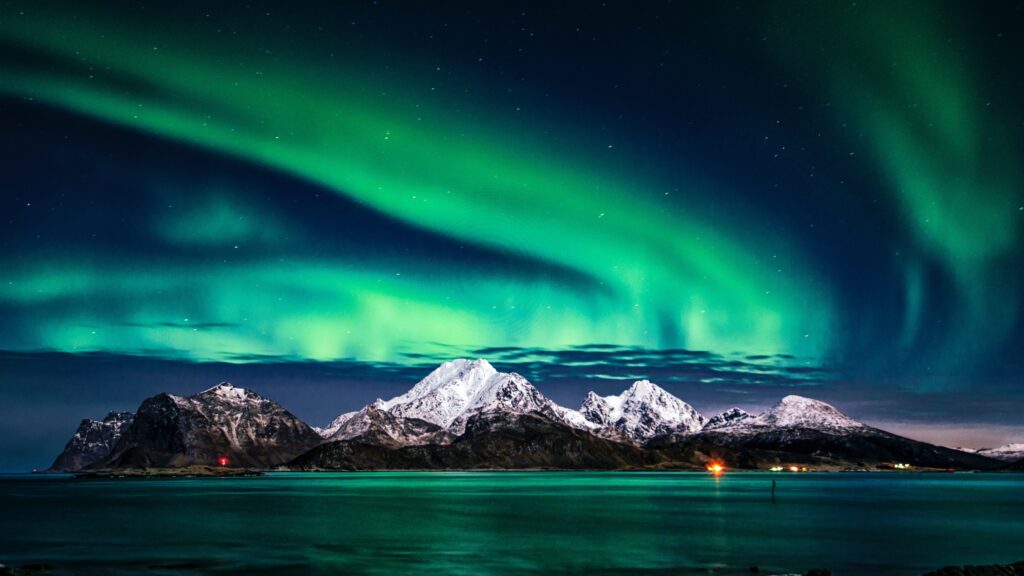No products in the cart.
Outdoor Adventure
The Top Outdoor Adventures You Can Have at Night
In 2010, a camping trip to the Sahara opened my eyes to the magic of the night sky. I was a college junior spending the summer abroad in Morocco, and until then I’d never seen the Milky Way, let alone a meteor shower, due to light pollution back in my suburban hometown of Dayton, Ohio. But that night, tucked into a sleeping bag beneath the African desert’s real-life planetarium, I saw them both. The experience opened me up to all the unfathomable marvels of the universe.
In the years since, I’ve built a travel-writing career around my fascination with the moonlit world. Recently, my noctural adventures have included: watching nesting sea turtles with Indigenous guides in Panama, pitching a tent on the Greenland ice sheet in a snowstorm, chasing the northern lights in Iceland, and searching for fluorescent rocks on the shores of Lake Superior—among many other sleepless excursions.
These trips, and many more such outings, fill the pages of my upcoming book, 100 Nights of a Lifetime: The World’s Ultimate Adventures After Dark, published by National Geographic and available on December 3. I hope the following three adapted excerpts—some of my favorite experiences—inspire you to skip sleep and soak up the night’s wonders, too.
The Adventure: Ice-Sheet Camping in Greenland
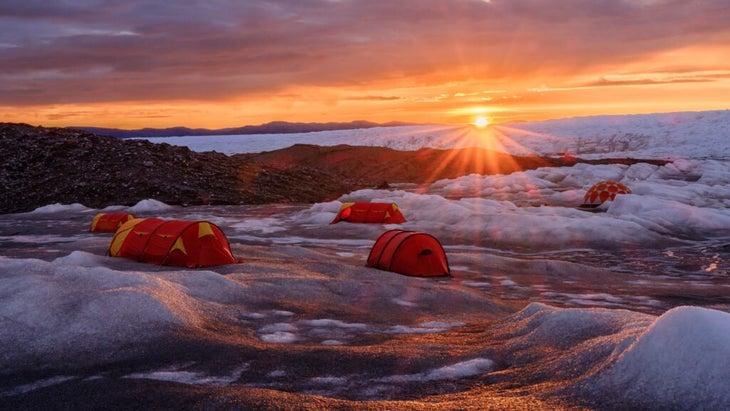
Spend an icy night camping above the Arctic Circle, following in the crampon-carved footsteps of polar explorers on the Greenland ice sheet. It’s a rare and immersive way to admire the world’s second largest expanse of ice, a blustery behemoth that blankets nearly 80 percent of Greenland’s landmass with icy mountains, teal lakes, and a minefield of crevasses and moulins (deep shafts in the ice).
Given the harrowing surroundings, most overnight ice-sheet jaunts are reserved for professional exploration or scientific research teams. But Camp Ice Cap makes the dream possible for more amateur, yet still intrepid, guests. The outfitter’s two-day, one-night camping trip offers a taste of expedition life—but don’t let the short duration fool you. A sleep on the unforgiving 656,000-square-mile sheet of white—an expanse roughly the size of Alaska—is no walk in the park.
On the trip, you and a team of trekkers haul tents, sleeping bags, and fuel for roughly one hour of hiking into the ivory abyss. Once you reach your overnight accommodations—an open patch of ice—it’s time to build camp from the ground up. You’ll crank ice stakes, sort gear, pitch tents, and collect snow to boil for water. It’s grueling work, but the sweat’s worth it for quality time with this rare wonder.
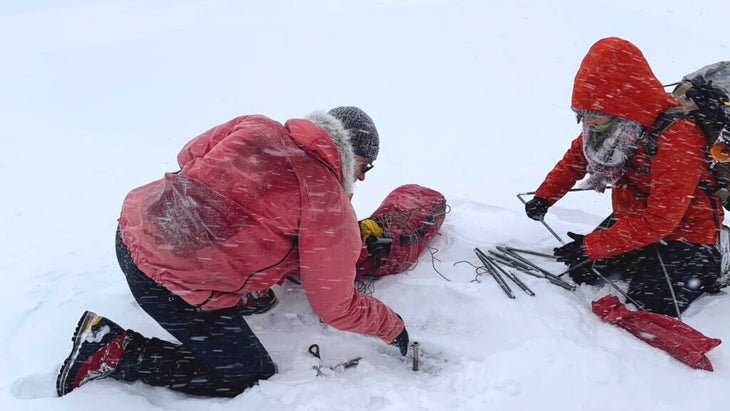
Once camp is set, you’ll have the opportunity to hike among ice mounds and pristine cerulean water bodies, aurora hunt (in the spring or fall), and admire the midnight sun come summer. Just as memorable are the deep conversations shared over freeze-dried dinners in Camp Ice Cap’s orange globe mess tent. One topic that’s sure to arise among these fragile landscapes: climate change.
As the news headlines show, Greenland’s ice sheet is ground zero of earth’s shifting climate. The white mass is expected to lose up to 110 trillion tons of ice by 2100—a change that could raise sea levels by a foot. To do its part protecting this natural resource, Camp Ice Cap tour operator Albatros Arctic Circle has a strict Leave No Trace policy. That means everything you bring with you must be carried out.
Each season introduces a different flavor of adventure. Come in the calmer summer months for ice hikes with endless hours of daylight and, on the warmest days, even short dips in meltwater “lakes” (water temperaturess hover slightly above freezing this time of year, but a warm sun can make the quick swim surprisingly refreshing). Visit in the shoulder seasons—spring or fall—for a chance to see auroras. But be prepared for particularly unpredictable and unforgiving weather that time of year. You could have a snowstorm, clear aurora-streaked skies, or both in the same night.
Weather is all part of the Camp Ice Cap adventure, as is the journey to get there in the first place. The trip begins in Kangerlussuaq, located inland in central-west Greenland. This town, home to one of the island’s main international airports, has the only road in Greenland that connects to the ice sheet. It’s a potholed 15.5-mile route, with potential reindeer and musk ox sightings along the way.
A good base level of fitness is required for a Camp Ice Cap visit, as the hiking can be strenuous and requires a bit of agility on the ice. Albatros Arctic Circle provides tents, sleeping bags, trekking poles, crampons, and food, but it’s up to you to pack warm-weather essentials: coats, gloves, hats, wool layers, headlamps, and, by all means, an extra pair of socks.
While You’re in Greenland
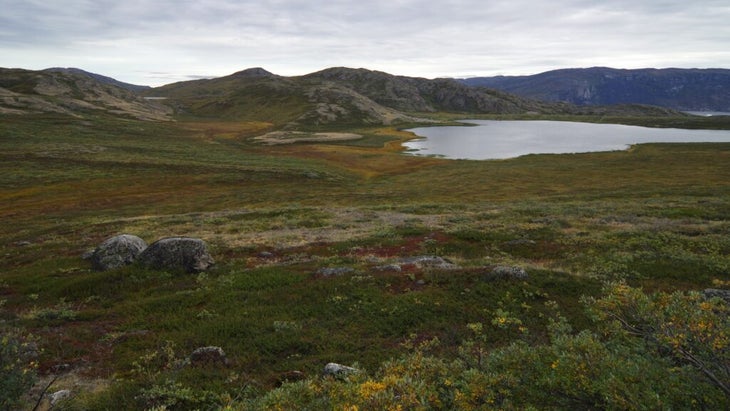
If a night at Camp Ice Cap whets your backcountry Greenland appetite, Kangerlussuaq has more where that came from. The town is connected to the island’s famed Arctic Circle Trail, a 100-mile thru-hike that runs from inland Kangerlussuaq to Sisimiut on the west coast. Expect unspoiled tundra sprinkled with musk oxen and reindeer on this roughly ten-day trek.
Other Greenland Marvels
A quick 45-minute flight north from Kangerlussuaq will drop you in Ilulissat, home to the Unesco World Heritage site Ilulissat Icefjord. This 34-mile patchwork of icebergs, some 10 to 20 stories tall, stems from the Sermeq Kujalleq (also known as Jakobshavn Glacier), which runs from the Greenland ice sheet. It’s one of the world’s fastest-moving glaciers, and scientists believe it produced the fateful iceberg that struck the Titanic in 1912.
The Adventure: Riding the Star Train in Nevada’s Great Basin Desert
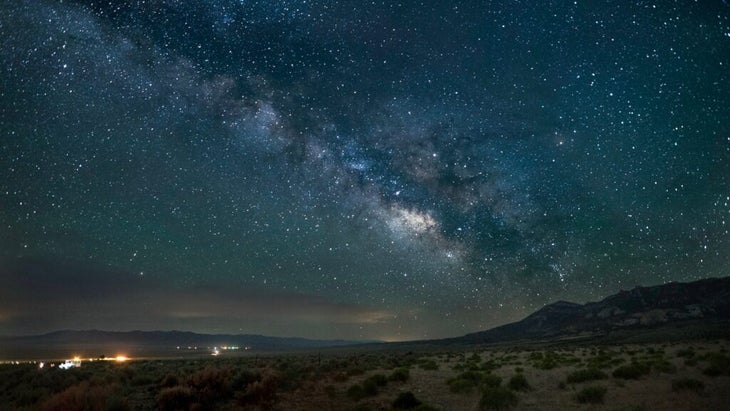
In the early 1900s, the Nevada Northern Railway put the remote town of Ely on the copper-mining map. More than a century later, the railway’s historic locomotives still tote riders into Nevada’s piñon- and juniper-dotted Steptoe Valley—although visitors now come seeking a different sparkly prize: clear, bedazzled nightscapes. They’ll find this rare bounty aboard the special-edition Star Train, which runs deep into the Great Basin Desert.
Up to 80 percent of Americans can’t see the Milky Way due to light pollution. The same can’t be said for those at the far-flung Great Basin, which covers much of Nevada. This 190,000-square-mile high-desert patchwork of sagebrush grasslands, rolling mountains, and broad valleys boasts some of the country’s darkest nightscapes. The Nevada Northern Railway, now a national historic landmark in Ely, roughly four hours north of Las Vegas by car, makes the most of the celestial entertainment via the Star Train, which departs around sunset on select Fridays between May and September.
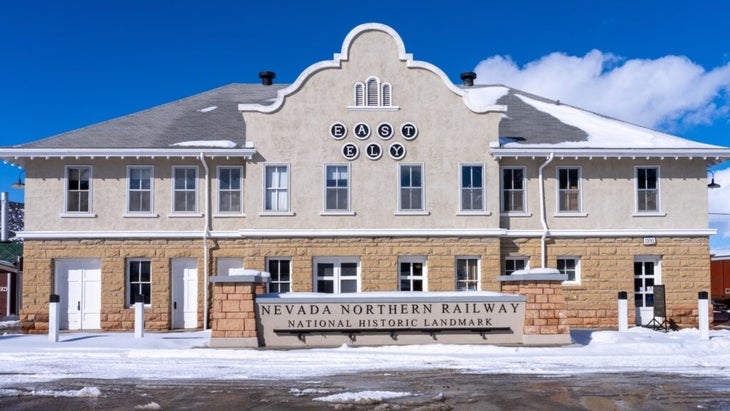
As the desert transitions from honey-hued golden hour to coal black night, onboard rangers from nearby Great Basin National Park and railway staff share tidbits about the night-sky attractions that await. Once you’ve reached your final destination—a private Great Basin viewing pad with high-powered telescopes—rangers narrate the universe’s marvels, from Saturn’s iridescent rings to any stargazer’s beloved treasure, the glowing Milky Way.
The Adventure: Hunting the Southern Lights in Australia
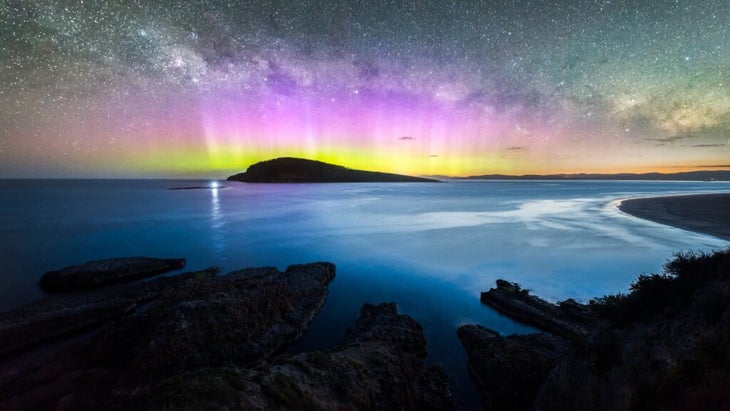
You’ve heard of the northern lights, but did you know you can chase those sky fluorescents in the Southern Hemisphere, too? Spotting these elusive green and violet streaks, known as the southern lights, or aurora australis, requires a bit of luck. Like the northern lights in the Arctic, southern-lights sightings are most frequent over Antarctica. But the Antarctica travel season—summer—coincides with the all-hours midnight sun. What’s an aurora hunter to do?
Head to Tasmania, a landmass better positioned for aurora sightings than virtually anywhere else in the Southern Hemisphere, excluding the White Continent. Its aurora potential has to do with its geographic position and the mechanism through which auroras occur.
During solar storms, the sun flings charged particles into space. When the protons and electrons reach earth, they congregate near the north and south geomagnetic poles, then react with the atmosphere to create ribbons of green, purple, red, or blue. Typically, the lights appear over far north or far south stretches of earth such as Iceland or Antarctica, but when a solar storm is strong enough, you can catch them farther in toward the equator. Tasmania, situated close to the south geomagnetic pole, is one of the hemisphere’s most reliable perches.
“We have no landmass in the Southern Ocean that corresponds with Norway or Iceland,” says Tasmania-based Margaret Sonnemann, author of The Aurora Chaser’s Handbook. In the Arctic or Antarctica, where the charged particles collide with the atmosphere in the skies above, you can see the reaction—the auroras—straight overhead. In Tasmania, you’ll typically admire the show from a distance, roughly between 45 to 60 degrees on the horizon.
This vantage point offers a unique perspective. When the lights are overhead, green colors are the most noticeable, says Sonnemann. “Side on, you see the layers of color.”
Given Tasmania’s pristine night skies, you can spot these colorful night swirls all over the island. Look for a panorama with minimal obstructions to the southern horizon; the northern banks of a large lake looking south, or the island’s southern coast looking out to sea, are ideal.
Some tried-and-true Tasmania aurora spots include Goat Bluff Lookout on the South Arm Peninsula, Carlton Beach, Tinderbox Bay, and the summit of Mount Wellington. For a southern lights–friendly hotel, try Pedder Wilderness Lodge, which has minimal light pollution and unobstructed south-facing views across Lake Pedder. Hit Taroona Beach, south of Hobart, during the warmer months to catch a thrilling after-dark duo: auroras snaking across the sky as electric blue bioluminescence pulses across the water.
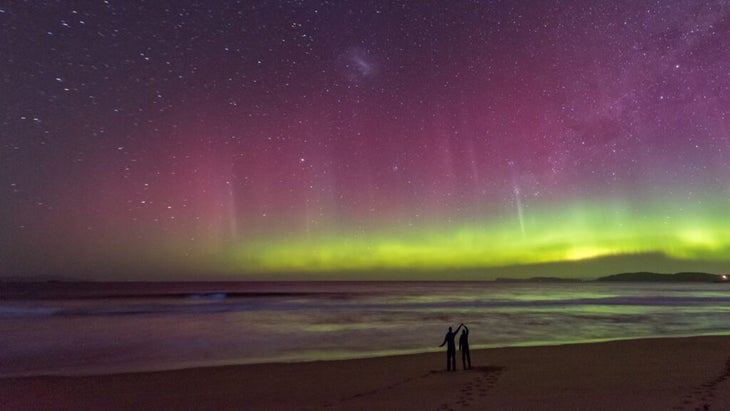
One advantage of Tasmania aurora hunting: you can catch the lights year-round. Tasmania experiences nighttime darkness in every season. Though you’ll have more hours of potential aurora displays in the darker winter, you could snag a stellar show on a warm summer night.
Fast Aurora Facts
The hue of an aurora depends on where the sun’s charged particles collide with earth’s atmosphere. Red auroras hit at the ionosphere, around 150 miles high. Green streaks occur in a mildly dense stretch of the atmosphere, roughly 60 to 150 miles from the ground. The rarer purple hues appear when the reaction strikes in our thick lower atmosphere, about 60 miles above earth’s surface.
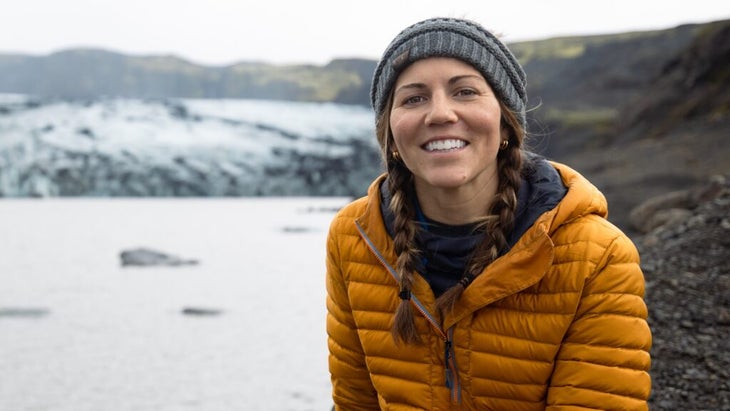
Stephanie Vermillion is a travel and adventure journalist with a particular interest in after-dark adventures, from the wonders of the night sky to the nocturnal happenings on planet earth. She recently wrote about how to take great aurora photos on an iPhone.
100 Nights of a Lifetime: The World’s Ultimate Adventures After Dark, by Stephanie Vermillion

Source link

